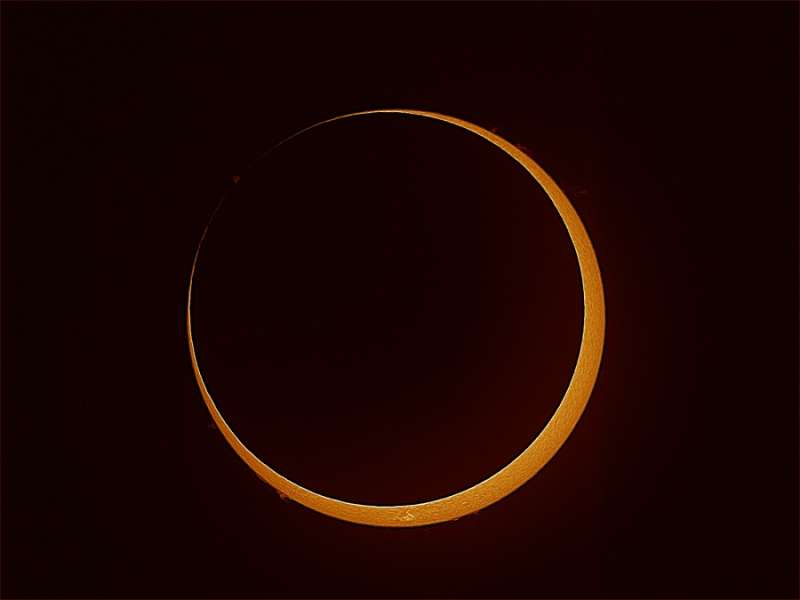Credit & Copyright: Cameron McCarty, Matthew Bartow, Michael Johnson -
MWV Observatory, Coca-Cola Space Science Center, Columbus State University Eclipse Team
Explanation:
It's eclipse season, and on
April
29 around 06:00 UT the shadow of the
new Moon will reach out and touch planet Earth,
though only just.
Still, if you're standing
on the continent of
Antarctica within
a few hundred kilometers of
79 degrees 38.7 minutes South latitude
and
131 degrees 15.6 minutes East longitude
you could see an
annular solar eclipse
with the Sun just above the horizon.
Because the Moon will be approaching apogee, the most distant point in the
elliptical lunar orbit, its apparent size will be too small to
completely cover the solar disk.
A rare, off-center eclipse, the annular phase will last at most 49 seconds.
At its maximum it could look something like this "ring of fire" image
from last May's annular solar eclipse,
captured by a webcast team
operating near Coen, Australia.
Otherwise, a partial eclipse with the Moon covering at least some
part of the Sun will be seen
across a much broader region in the southern hemipshere, including
Australia
in the afternoon.
MWV Observatory, Coca-Cola Space Science Center, Columbus State University Eclipse Team
1998 1999 2000 2001 2002 2003 2004 2005 2006 2007 2008 2009 2010 2011 2012 2013 2014 2015 2016 2017 2018 2019 2020 2021 2022 2023 2024 |
Январь Февраль Март Апрель Май Июнь Июль Август Сентябрь Октябрь Ноябрь Декабрь |
NASA Web Site Statements, Warnings, and Disclaimers
NASA Official: Jay Norris. Specific rights apply.
A service of: LHEA at NASA / GSFC
& Michigan Tech. U.
|
Публикации с ключевыми словами:
annular solar eclipse - кольцеобразное солнечное затмение
Публикации со словами: annular solar eclipse - кольцеобразное солнечное затмение | |
См. также:
Все публикации на ту же тему >> | |
